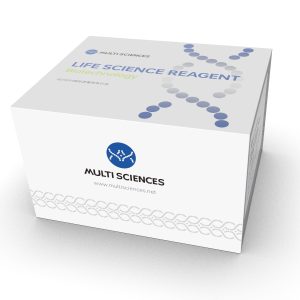HGNC ID: 11740
Target Abstract:
Transferrin (TF) is a secreted protein belonging to the transferrin family that is expressed by the liver and secreted into the plasma. TF has a molecular weight of about 80kDa and contains two specific high-affinity Fe3+ binding sites. TFs is an iron-binding glycoprotein present in plasma that regulates the level of free iron in biological fluids. Its main role is to transport iron from duodenal absorption centers and leukocyte macrophages to other tissues. TF is related to the innate immune system. In an inflammatory state, its levels are reduced. It is common to see increased plasma TF levels in patients with iron deficiency anemia. Plasma TF levels are generally reduced in patients with iron overload and protein malnutrition. Recently, TF and its receptors have been found to reduce tumor cells when TF receptors attract antibodies. TF is an acute phase protein, so its levels are decreased in inflammation, cancer, and certain diseases.
TF Target Infomation Overview
- Target Symbol: TF, transferrin
- Gene Groups: Transferrins
- Alias: PRO1557; PRO2086
- Alias Names: serotransferrin
TF, transferrin Target Infomation by Species
- Human
- Mouse
- Rat
Human TF Target Information
- Target Symbol: TF, transferrin
- Alias:
- beta-1 metal-binding globulin
- DKFZp781D0156
- epididymis secretory sperm binding protein Li 71p
- HEL-S-71p
- PRO1557
- PRO2086
- serotransferrin
- siderophilin
- TFQTL1
- NCBI_Gene: 7018
- UniProtKB: P02787
Human TF Predicted Functions
Enables ferrous iron binding activity; iron chaperone activity; and transferrin receptor binding activity. Involved in cellular response to iron ion; positive regulation of receptor-mediated endocytosis; and regulation of iron ion transport. Located in several cellular components, including basal plasma membrane; clathrin-coated pit; and cytoplasmic vesicle. Is extrinsic component of external side of plasma membrane. Part of HFE-transferrin receptor complex. Implicated in anemia; atransferrinemia; glucose metabolism disease (multiple); iron deficiency anemia; and restless legs syndrome. Biomarker of glomerulonephritis; hypertension; and membranous glomerulonephritis.
Mouse Trf Target Information
- Target Symbol: Trf, transferrin
- Alias:
- AI266983
- expressed sequence AI266983
- HP
- hpx
- hypotransferrinemia with hemochromatosis
- Tfn
- NCBI_Gene: 22041
Mouse Trf Predicted Functions
Predicted to enable iron chaperone activity; iron ion binding activity; and transferrin receptor binding activity. Involved in several processes, including ERK1 and ERK2 cascade; osteoclast differentiation; and positive regulation of bone resorption. Acts upstream of or within SMAD protein signal transduction; iron ion transport; and response to bacterium. Located in clathrin-coated pit and cytoplasmic vesicle. Is expressed in several structures, including brain; liver; placenta; white fat; and yolk sac. Used to study atransferrinemia. Human ortholog(s) of this gene implicated in anemia; atransferrinemia; glucose metabolism disease (multiple); iron deficiency anemia; and restless legs syndrome. Orthologous to human TF (transferrin).
Rat Tf Target Information
- Target Symbol: Tf, transferrin
- Alias:
- beta-1 metal-binding globulin
- liver regeneration-related protein LRRG03
- MGC93500
- serotransferrin
- siderophilin
- Tfn
- Trf
- NCBI_Gene: 24825
Rat Tf Predicted Functions
Enables ferric iron binding activity. Involved in several processes, including cellular response to cAMP; cellular response to follicle-stimulating hormone stimulus; and regulation of nervous system development. Located in basement membrane; cell tip; and extracellular space. Used to study hepatitis. Biomarker of anemia and obesity. Human ortholog(s) of this gene implicated in anemia; atransferrinemia; glucose metabolism disease (multiple); iron deficiency anemia; and restless legs syndrome. Orthologous to human TF (transferrin).

